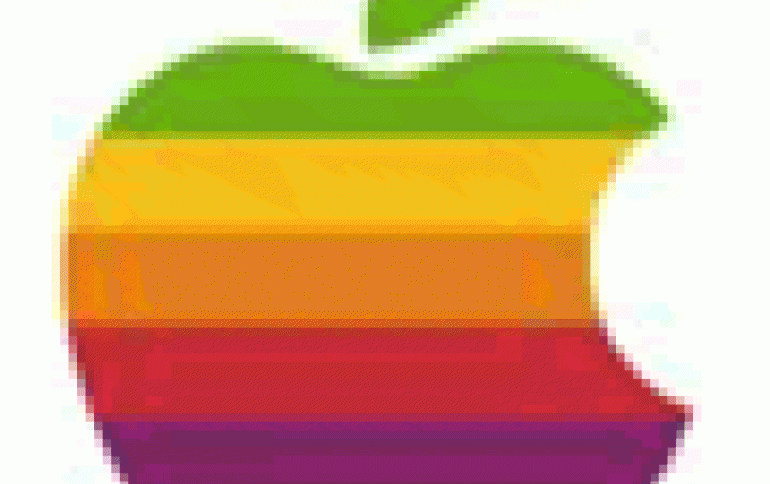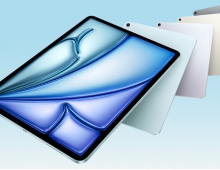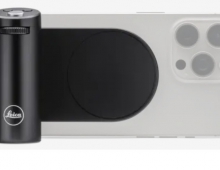
New Apple Technology Seeks Patent
Chief Executive Steve Jobs wants to patent a process that will save customers the hassle of waiting to order a cup of coffee at a local Starbucks (nasdaq: SBUX - news - people ) or a fresh burger at the nearest fast food restaurant. Even better: The technology would let you jump the line of those ordering in person.
In an application with the U.S. Patent Office published on Dec. 20, the Cupertino, Calif.-based computer and gadget company described a wireless system that would allow customers to place an order at a store using a wireless device such as a media player, a wireless personal digital assistant or a cellphone.
The system could go far beyond the program that Apple announced with Starbucks in September, which allows iPhone users to press a button and wirelessly download the song playing in the background as they sip their soy lattes.
Apple's application with the U.S. Patent and Trademark Office describes a process for placing an order and then notifying customers when an order is ready to grab at a pick-up station. One goal, the patent application notes, is to avoid an "annoying wait in a long queue if the purchaser arrives before completion of the order."
U.S. Patent Application #20070291710 describes a device that also would keep tabs on where a user shops and what he or she likes to buy. Computers at participating stores would keep track of regular customers and their favorite orders.
Customers might tap a button to order their favorite drink, say a double-shot mocha, as they stroll up to the nearest coffee shop. When the drink is ready go to, the device--such as an iPhone--would chime or blink to let the thirsty one know it's time to scoop up the order at the counter.
The patent puts Apple's partnership with Starbucks in a new light. The technology promises to morph Apple from the business of simply selling gadgets and music and movies that can be played on those devices into an intermediary in all kinds of exchanges.
Apple is notoriously tight-lipped about its future products. But head honcho Jobs has also said that he believes the innovative insights at the core of the iPhone all start in the software built into the device, not its sleek form factor.
Apple granted eight patents in December, and the patent office published applications for 12 others, giving investors and Apple fans an idea of where the secretive company could be headed next.
Most cover relatively mundane technologies. Others, however, have stirred interest. Patent application #20070288886, unhelpfully titled "Run-Time Code Injection To Perform Checks," describes a system that would restrict the use of some software to "specific hardware platforms."
The application, published Dec. 13, suggests Apple could adopt something similar to Microsoft's (nasdaq: MSFT - news - people ) widely criticized Windows Genuine Advantage copy protection program, which checks a user's machine to confirm that it is not running a pirated version of Microsoft's software in exchange for access to certain software updates.
The system could go far beyond the program that Apple announced with Starbucks in September, which allows iPhone users to press a button and wirelessly download the song playing in the background as they sip their soy lattes.
Apple's application with the U.S. Patent and Trademark Office describes a process for placing an order and then notifying customers when an order is ready to grab at a pick-up station. One goal, the patent application notes, is to avoid an "annoying wait in a long queue if the purchaser arrives before completion of the order."
U.S. Patent Application #20070291710 describes a device that also would keep tabs on where a user shops and what he or she likes to buy. Computers at participating stores would keep track of regular customers and their favorite orders.
Customers might tap a button to order their favorite drink, say a double-shot mocha, as they stroll up to the nearest coffee shop. When the drink is ready go to, the device--such as an iPhone--would chime or blink to let the thirsty one know it's time to scoop up the order at the counter.
The patent puts Apple's partnership with Starbucks in a new light. The technology promises to morph Apple from the business of simply selling gadgets and music and movies that can be played on those devices into an intermediary in all kinds of exchanges.
Apple is notoriously tight-lipped about its future products. But head honcho Jobs has also said that he believes the innovative insights at the core of the iPhone all start in the software built into the device, not its sleek form factor.
Apple granted eight patents in December, and the patent office published applications for 12 others, giving investors and Apple fans an idea of where the secretive company could be headed next.
Most cover relatively mundane technologies. Others, however, have stirred interest. Patent application #20070288886, unhelpfully titled "Run-Time Code Injection To Perform Checks," describes a system that would restrict the use of some software to "specific hardware platforms."
The application, published Dec. 13, suggests Apple could adopt something similar to Microsoft's (nasdaq: MSFT - news - people ) widely criticized Windows Genuine Advantage copy protection program, which checks a user's machine to confirm that it is not running a pirated version of Microsoft's software in exchange for access to certain software updates.





















